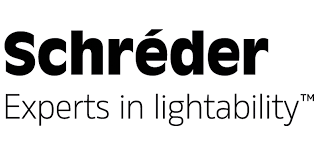
Illuminating Cities:
A Conversation with Christian Mildner of Schréder
By:
OMA
|
2025-October-22
Welcome to our latest OMA Member Spotlight, where we explore how member companies are driving innovation through open standards, interoperability, and collaboration. In this edition, OMA General Manager Seth Newberry sits down with Christian Mildner, Business Segment Director for Smart and Connected Solutions at Schréder, to discuss the company’s journey in the smart lighting and Smart City space and how Lightweight M2M (LwM2M) technology is helping shape the cities of tomorrow.
Seth: Can you tell us about your company and your role within it?
Christian: Schréder is one of the world’s leading independent providers of outdoor lighting and smart city solutions. We’re active in more than 70 countries and remain a family-owned business, founded back in 1907. Our roots are in public lighting, and over the last two decades we’ve expanded into smart systems and digital solutions. In 2019, we launched our Smart City Center of Excellence—Schréder Hyperion—based in Lisbon, Portugal, which works on innovation and data-driven city management. I lead the Smart and Connected business segment, overseeing product management, global sales support, and after-sales operations.
Seth: Why did Schréder decide to become a member of OMA, and what value has that brought to your business?
Christian: Interoperability is at the heart of everything we do. Cities often face major challenges managing data from sensors and devices that don’t communicate well with each other. Vendor lock-in limits transparency, flexibility, and innovation. That’s why we joined OMA: to contribute to and benefit from open standards like Lightweight M2M that address these challenges. Membership has also been valuable in building relationships with utilities, network operators, IoT vendors, partner companies, and even competitors. Being part of this ecosystem strengthens trust among our customers and shows that the solutions we create are based on recognized, open foundations.
Seth: How has participating in OMA activities influenced Schréder’s product development?
Christian: Interoperability has been a strategic focus from day one. We adopted Lightweight M2M early and built it into the core of our products and platform—the Schréder EXEDRA platform. That decision completely shaped our development strategy for the newest generation of our solutions. Over the past five years, every significant platform and device we’ve launched has had LwM2M built in. It’s helped us ensure scalability and long-term compatibility in the Smart City space.
Seth: Can you share a real-world example of where Schréder has implemented LwM2M?
Christian: Absolutely. All of our current platforms and most of our devices run LwM2M using uCIFI data models. Recently, we integrated with a third-party vendor who also supported the standard. Thanks to LwM2M, we were able to achieve full integration quickly and offer the customer an end-to-end solution much faster than would otherwise have been possible. We have live deployments around the world: large-scale projects in Australia, for example with the City of Sydney and Ausgrid, as well as in Europe with utilities like Fluvius in Belgium and many municipalities across all major European countries. Many of these deployments rely on our platform and connected luminaires, all using LwM2M.
Seth: Have you encountered challenges convincing cities to adopt open and interoperable technologies like LwM2M?
Christian: Actually, cities are very receptive once they understand the advantages. The largest hurdle tends to be with legacy systems; the older technologies they’re already using that don’t support LwM2M or other open standards that would allow for easy integration. Upgrading can be more complex than starting fresh. Change management (training, processes, and integration) is always a consideration. But being able to point to open, standardized technology backed by organizations like OMA really builds confidence and trust.
Seth: From your perspective, why are OMA specifications, and LwM2M in particular, so important for sectors like utilities and Smart Cities?
Christian: Open standards solve interoperability challenges by giving customers choice and flexibility. Cities can select the best devices and platforms for their needs rather than being confined to one vendor. That reduces risk, future-proofs deployments, and supports innovation. Interoperability means cities can evolve over time and bring in new solutions and technologies as they emerge. It also encourages vendors like us to innovate because open systems create larger, more dynamic markets and new opportunities for collaboration.
Seth: Looking ahead, what developments in IoT and connectivity are you most excited about?
Christian: We’re seeing tremendous growth in edge computing: more intelligence at the device level, with analytics and AI making local decisions. Artificial intelligence is also increasingly deployed in central systems for data insights and optimization. 5G and emerging network technologies are enabling massive IoT deployments, which perfectly aligns with Smart City ambitions. Another critical area is cybersecurity. As cities connect more infrastructure, ensuring resilient, secure systems becomes essential. We also see a strong move toward holistic city platforms, which are breaking down silos between departments like lighting, parking, and environmental management. Open, interoperable frameworks such as LwM2M are essential for that vision.
Seth: That’s a great perspective. Any final thoughts? Christian: Just that interoperability, open collaboration, and future-proof design are key to unlocking smarter, more sustainable cities. Standards like LwM2M enable that transformation and help ensure that innovation continues to thrive across the entire ecosystem.
About Schréder and Schréder Hyperion
Founded in 1907, Schréder is a global leader in smart lighting and connected infrastructure. The company’s Smart City Center of Excellence, Schréder Hyperion, is based in Lisbon, Portugal, and drives research and innovation in sustainable urban solutions. Through open standards such as OMA’s Lightweight M2M, Schréder delivers interoperable platforms for intelligent lighting, resource management, and data-driven city operations across more than 70 countries worldwide.
Conclusion:
Christian Mildner’s insights reveal how open standards like Lightweight M2M not only enable technical interoperability but also nurture trust, innovation, and collaboration across ecosystems. Schréder’s Smart City projects demonstrate how OMA technologies can help cities evolve toward integrated, efficient, and sustainable urban systems.
Could your company benefit from OMA membership?
Learn more at https://www.openmobilealliance.org/join

